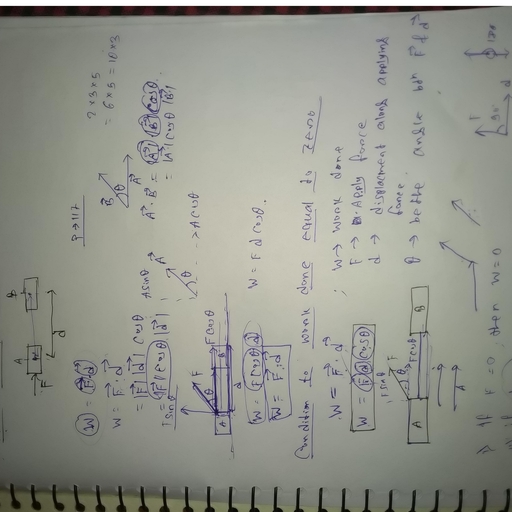Question 1 :
If amplitude of particle executing SHM is doubled,which of the following quantities are doubled <br>a) Time period <br>b) Maximum velocity <br>c) Maximum acceleration <br>d) Total energy
Question 2 :
A spring has a certain mass suspended from it and its period for vertical oscillation is $T$. The spring is now cut into two equal halves and the same mass is suspended from one of the halves. The period of vertical oscillation is now
Question 3 :
If the time period of a pendulum is $25 s$. What is the frequency of the pendulum?
Question 4 :
Any oscillation in which the amplitude of the oscillating quantity decreases with time is termed as<br>
Question 5 :
For a simple pendulum, graph between $L$ and $T$ will be a :
Question 8 :
If the period of oscillation of a simple pendulum is 4 second and we want to convert it into a second pendulum, then we have to
Question 9 :
The displacement equations of two simple harmonic oscillators are given by $ x_{1} =A_{1}\cos\omega t$; $ x_{2}= A_{2} \sin\left(\omega t+\frac{\pi }{6} \right )$. The  phase difference between them is:
Question 11 :
The time period of oscillation of a particle that executes S.H.M. is $1.2 sec$. The time starting from extreme position, its velocity will be half of its velocity at mean position is 
Question 12 :
Identical springs of spring constant $K$ are connected in series and parallel combinations. A mass $m$ is suspended from them. The ratio of their frequencies of vertical oscillations will be<br/>
Question 13 :
A particle is executing SHM of period 4s.Then the time taken by it to move from thr extreme position to $\frac{\sqrt 3}{2}$ of the amplitude is:
Question 14 :
The time taken by a particle performing S.H.M. to pass from point $ A $ to $ B $ where its velocities are same is $2$ seconds. After another 2 seconds it returns to $ \mathrm{B} $ . The time period of oscillation is (in seconds):
Question 15 :
Two springs have their force constants as ${ K }_{ 1 }$ and ${ K }_{ 2 }$ (${ K }_{ 1 }$>${ K }_{ 1 }$). The work done when both are stretched by same amount of length will be :
Question 16 :
A body performing simple harmonic motion has velocity time graph shifted along Y direction by $a$ units then choose the correct option,
Question 17 :
A particle executes SHM, whose equation is given by $x=A sin \omega t$. What will be the equation of a particle executing SHM, If it started at the other extreme simultaneously at t = 0
Question 18 :
A plot of acceleration v/s displacement for a particle executing SHM gives a straight line
Question 19 :
Assertion: Graph between potential energy of a spring versus the extension or compression of the spring is a straight line
Reason: Potential energy of a stretched or compressed spring is proportional to square of extension or compression
Question 21 :
$FA$ point performs simple harmonic oscillation of period $T$ and the equation of motion is given by $x=a sin \left ( \omega t+\frac{\pi }{6} \right )$. After the elapse of what fraction of the time period the velocity of the<br>point will be equal to half of its maximum velocity ?<br>
Question 22 :
If a spring balance having frequency $f$ is taken on moon (having $g' = g/6$) it will have a frequency of
Question 23 :
 A particle moves along the $x$-axis according to the equation $x = 10 sin3 ( t )$. The amplitudes and frequencies of component SHMs are<br/>
Question 24 :
Assertion: Path of a particle in SHM is always a straight line.
Reason: All straight line motions are not simple harmonic.
Question 25 :
A particle executes SHM on a straight line path. The amplitude of oscillation is 2 cm. When the displacement of the particle from the mean position is 1 cm, the numerical value of the magnitude of acceleration is equal to the numerical value of the magnitude of the velocity. The frequency of SHM is:
Question 26 :
A small solid cylinder of mass M attached to a horizontal massless spring can roll without slipping along a horizontal surface. find its time period.
Question 27 :
The amplitude of a particle executing SHM about O is 10 cm. Then:
Question 29 :
A particle is performing linear S.H.M. with period 6 s and amplitude 'a'. The minimum time taken by the particle to travel between two points situated at a distance $\dfrac{a}{2}$ on either sides of mean position is :
Question 30 :
A point particle of mass $0.1\ kg$ is executing S.H.M of amplitude of $0.1\ m$. When the particle passes through the mean position, its kinetic energi is $18\times 10^{-3}\ J$. The equation of motion of this particle when the initial phase of oscillation is $45^o$ can be given by :<br>
























































